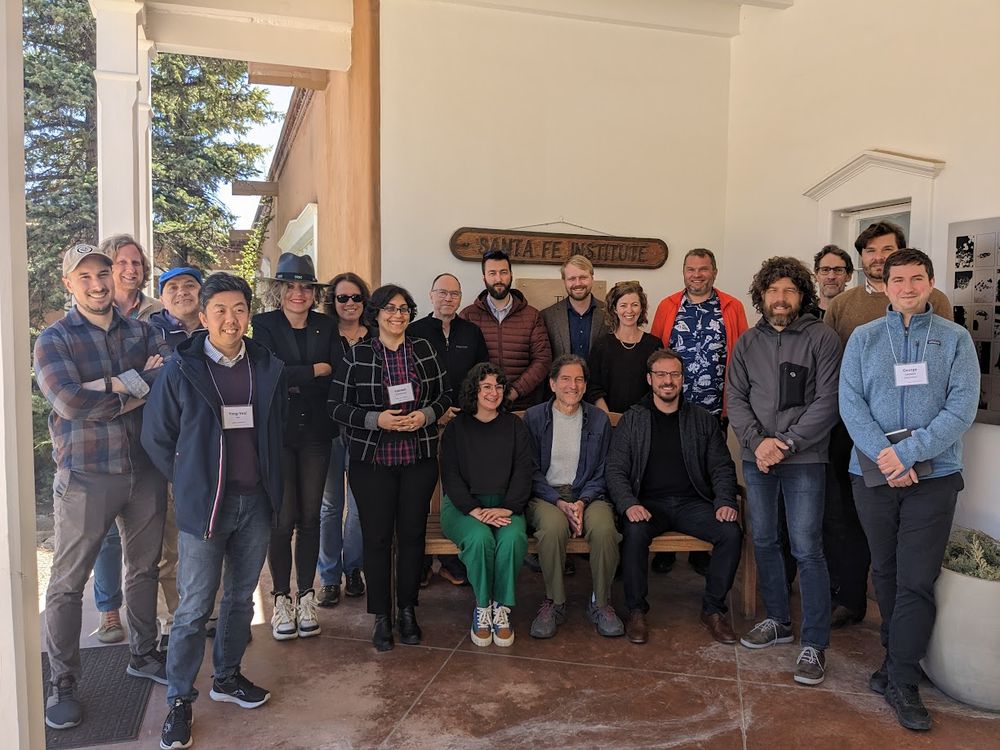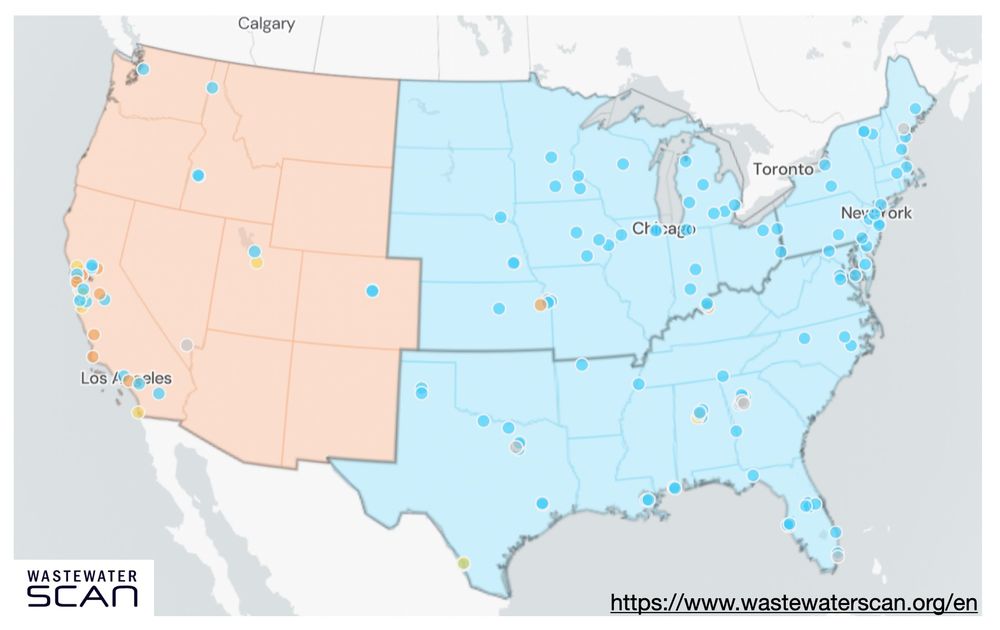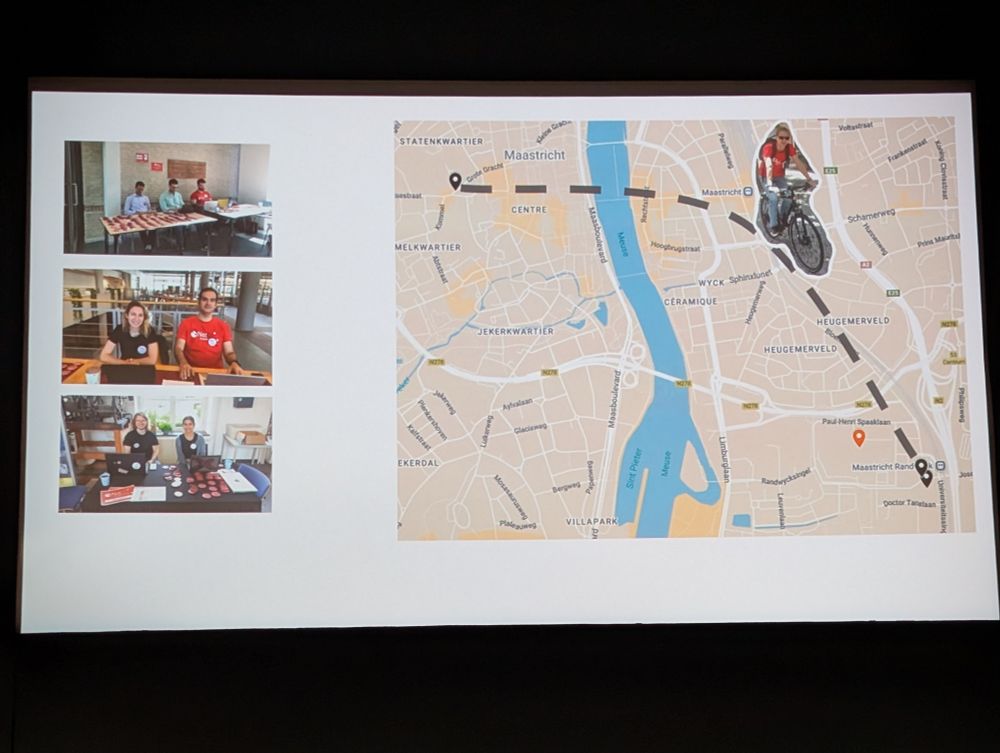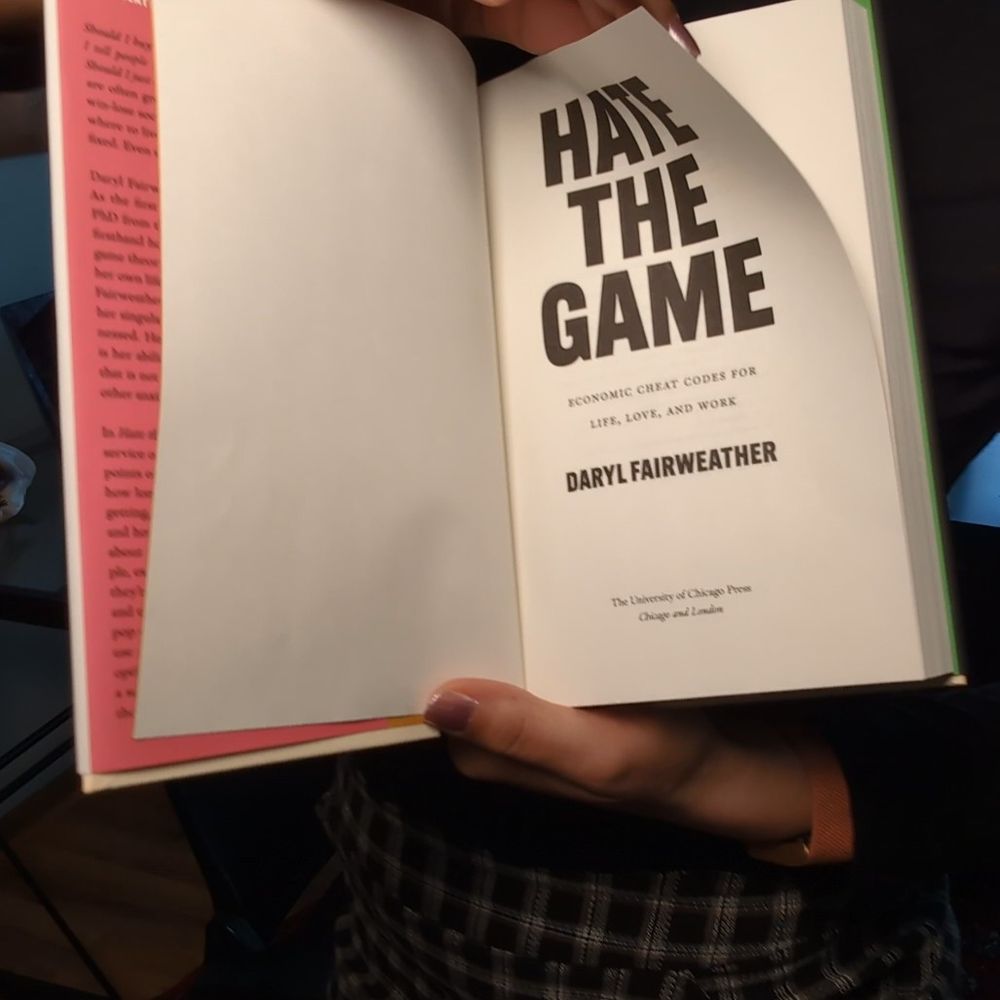
In this technical note, we study the problem of inverse permutation learning in decoder-only transformers. Given a permutation and a string to which that permutation has been applied, the model is tasked with producing the original ("canonical") string. We argue that this task models a natural robustness property across a variety of reasoning tasks, including long-context retrieval, multiple choice QA and in-context learning. Our primary contribution is an impossibility result: we show that an arbitrary depth, decoder-only transformer cannot learn this task. This result concerns the expressive capacity of decoder-only transformer models and is agnostic to training dynamics or sample complexity. We give a pair of alternative constructions under which inverse permutation learning is feasible. The first of these highlights the fundamental role of the causal attention mask, and reveals a gap between the expressivity of encoder-decoder transformers and the more popular decoder-only architecture. The latter result is more surprising: we show that simply padding the input with "scratch tokens" yields a construction under which inverse permutation learning is possible. We conjecture that this may suggest an alternative mechanism by which chain-of-thought prompting or, more generally, intermediate "thinking" tokens can enable reasoning in large language models, even when these tokens encode no meaningful semantic information (e.g., the results of intermediate computations).
Implementing “reasoning” as “just keep talking to yourself” feels so weird & hacky.
But maybe not, according to this? They show that just-predicting-the-next-word is inherently unable to learn to solve some (permutation) problems unless you “pad” with extra thought tokens. arxiv.org/abs/2509.24125
30.09.2025 12:40 — 👍 63 🔁 4 💬 9 📌 1
Message passing for epidemiological interventions on networks with loops
https://arxiv.org/abs/2509.21596
29.09.2025 15:34 — 👍 6 🔁 5 💬 0 📌 0
Five misunderstandings in animal social network analysis
Are you studying animal sociality? Confused about the "non-independence" of social network data: what on earth are they? are they threatening your results? should you attempt to get rid of them?
A thread summarising a part of our new paper (ecoevorxiv.org/repository/v...).
04.09.2025 15:23 — 👍 20 🔁 12 💬 1 📌 1
🎓 I've joined the PhD in Complex Systems & Data Science at @vcsi.bsky.social to work w/ @lhd.bsky.social & @juniperlov.bsky.social to explore social (complex) dynamics
🔬 Huge thanks to @joanagsa.bsky.social & Lília Perfeito for helping me get ready for this chapter
🚀 Excited for this next step!
01.09.2025 21:19 — 👍 18 🔁 3 💬 1 📌 1
Five misunderstandings in animal social network analysis
🐒🕸️ New preprint! Confused about how to model animal social networks?
ASNA can be confusing—but also full of opportunity. We break down 5 common misunderstandings in animal social network analysis and share solutions from behavioural ecology, anthro, stats, & network science. Hope it helps!
A 🧵
04.08.2025 16:21 — 👍 43 🔁 23 💬 2 📌 3
All from an amazing interdisciplinary group 👥: @benkawam.bsky.social 🌟, @jgyou.bsky.social, Dan Franks, Connor Philson, Marijtje van Duijn, @jordanhart96.bsky.social, MB McElreath, @rmcelreath.bsky.social, @eapower.bsky.social, Cody Ross, @steglich.bsky.social, & @ljnbrent.bsky.social!
04.08.2025 16:21 — 👍 4 🔁 1 💬 0 📌 0
And the code is live here: github.com/DynamicaLab/...
With @allard.bsky.social and the never-online Simon Lizotte (but you can find him at siliz4.github.io)
19.05.2025 23:38 — 👍 13 🔁 2 💬 0 📌 0
Hear me discuss our new paper written with the inimitable Laurent Hébert-Dufresne and colleagues! @lhd.bsky.social #Complexity #Physiology #Governance www.nature.com/articles/s44...
01.05.2025 21:08 — 👍 11 🔁 5 💬 0 📌 1

On this day in 2023, the Vermont Complex Systems Institute (vermontcomplexsystems.org), TGIR Center (www.med.uvm.edu/tgircobre/home) & @sfiscience.bsky.social joined for an event on interacting contagions
Our work, "One pathogen does not an epidemic make," is now online: arxiv.org/abs/2504.15053
24.04.2025 16:44 — 👍 16 🔁 3 💬 1 📌 0

So glad to have @jgyou.bsky.social give an intriguing lecture on contagion modeling and network inference in our network science class!
17.04.2025 20:39 — 👍 23 🔁 1 💬 0 📌 0
Focus Issue on Statistical Inference and Machine Learning for Complex Networks - IOPscienceSearch
I've been guest editing a focus issue for Journal of Physics: Complexity with @jgyou.bsky.social, @gcant.bsky.social, and Cate De Bacco on Statistical Inference and Machine Learning for Complex Networks. See iopscience.iop.org/collections/..., and feel free to get in touch with any questions!
05.04.2025 03:56 — 👍 4 🔁 4 💬 1 📌 0
You should find that haircut again.
13.03.2025 18:02 — 👍 4 🔁 1 💬 0 📌 0
We're excited to share our MAR10 day discounts!
- $1 off of Mario's Time Machine
- A free wallpaper
11.03.2025 17:49 — 👍 2 🔁 0 💬 0 📌 0

Downscaling mutualistic networks from species to individuals reveals consistent interaction niches and roles within plant populations
Species-level networks emerge as the combination of interactions spanning multiple individuals, and their study has received considerable attention over the past 30 y. However, less is known about the structure of interaction configurations within species, even though individuals are the actual interacting units in nature. We compiled 46 empirical, individual-based, interaction networks on plant-animal seed dispersal mutualisms, comprising 1,037 plant individuals across 29 species from various regions. We compared the structure of individual-based networks to that of species-based networks and, by extending the niche concept to interaction assemblages, we explored individual plant specialization. Using a Bayesian framework to account for uncertainty derived from sampling, we examined how plant individuals “explore” the interaction niche of their populations. Both individual-based and species-based networks exhibited high variability in network properties, lacking remarkable structural and topological differences between them. Within populations, frugivores’ interaction allocation among plant individuals was highly heterogeneous, with one to three frugivore species dominating interactions. Regardless of species or bioregion, plant individuals displayed a variety of interaction profiles across populations, with a consistently-small percentage of individuals playing a central role and exhibiting high diversity in their interaction assemblage. Plant populations showed variable mid to low levels of niche specialization; and individuals’ interaction niche “breadth” accounted for 70% of the population interaction diversity, on average. Our results highlight how downscaling from species to individual-based networks helps understanding the structuring of interactions within ecological communities.
1/ New paper @pnas.org on the structure of mutualistic #networks between individuals plants and frugivore species.
Last chapter of @elequintero.bsky.social's PhD thesis
doi.org/10.1073/pnas... #ecopubs
19.02.2025 14:32 — 👍 43 🔁 12 💬 2 📌 0
On a similar note I got spoiled by Dr Watson in Julia. Is there a good Python equivalent?
23.11.2024 00:00 — 👍 4 🔁 1 💬 0 📌 0
We are reaching the time of year when I start hearing from undergrads who are looking for summer internships. Obviously, they should all apply to Pew, but what other research orgs have internship programs that I can tell them about? What other opportunities can I share with them?
14.01.2025 02:39 — 👍 73 🔁 19 💬 6 📌 0
SOCKS Undergraduate Internships | SOCKS
24h left to apply to the REU experience at UVM!
Harnessing the Data Revolution for Vermont: The Science of Online Corpora, Knowledge, and Stories (SOCKS)
socks.w3.uvm.edu/socks/node/65
14.01.2025 14:04 — 👍 0 🔁 1 💬 0 📌 0
Pairwise Comparison Modeling
Comparison may be a thief of joy, but it is an undoubtably interesting statistical modeling problem. In my latent chapter I go deep into the general problem of modeling comparisons between pairs of abstract items.
HTML: betanalpha.github.io/assets/chapt...
PDF: betanalpha.github.io/assets/chapt...
20.12.2024 15:55 — 👍 31 🔁 6 💬 2 📌 0

ACE Lab: Applied Cultural Evolution Laboratory
culture, evolution, cooperation, and sustainability
Fully-funded PhD position on the cultural evolution of environmental management!
Link evolution, ecology and behavioral science to study how people manage environmental challenges in the ACE Lab (timwaring.info).
Position Details: timwaring.info/wp-content/u...
17.12.2024 02:51 — 👍 12 🔁 10 💬 0 📌 0
I preemptively declare paper bankruptcy. Anything published on arXiv during the next 3 weeks will be permanently memory black holed.
16.12.2024 15:57 — 👍 10 🔁 1 💬 0 📌 0

Fall retreat in Vermont where the project was started. Panorama with a field and hills in the distance.
A project with friends from the Vermont Complex Systems Institute @juniperlov.bsky.social @jstonge.bsky.social @nwlandry.bsky.social @jgyou.bsky.social
Funded by an ambitious AUDACE project from friends and co-authors from Université de Sherbrooke.
Started in the Green Mountains two years ago.
10.12.2024 13:30 — 👍 17 🔁 3 💬 0 📌 1

Map shows the location of wastewater sampling locations around the US. Most of the sites indicate low levels and are colored blue. However, there are a number of sites in CA with high levels and few other scattered sites around the US with medium/high levels and are colored in orange/red
1/ Influenza wastewater activity levels are currently low across the US, aside from conspicuous areas in CA where #H5N1 is spreading in dairy cows.
A deeper dive into the Wastewater Scan data paints a very concerning picture and should add to our sense of urgency.
26.11.2024 22:06 — 👍 626 🔁 235 💬 27 📌 33
what idiot called it async/await instead of wait/what
21.11.2024 23:18 — 👍 431 🔁 69 💬 11 📌 5
Gaussian approximation of a target distribution: mean-field versus full-covariance! Below shows a simple gradient descent on KL(q||p)
20.11.2024 08:51 — 👍 62 🔁 5 💬 3 📌 2
Having a sides-only Thanksgiving this year. No turkey, just carbs and gravy. Modern problems require modern solutions.
20.11.2024 03:16 — 👍 12872 🔁 736 💬 475 📌 161
👋
20.11.2024 17:01 — 👍 1 🔁 0 💬 1 📌 0
I don’t know man, I just don’t know.
UVM Biology fosters exploration and collaboration, advancing life science through research in neuroscience, cell biology, ecology, and evolution.
Postdoc at the University of Pennsylvania. Using math and computation to study cooperation and collective behavior.
Associate Professor of Statistics and Data Analytics at the University of Limerick
The Vermont Complex Systems Institute at the University of Vermont is a post-disciplinary team working on real-world, data-rich, meaningful complex systems problems of all kinds. https://vermontcomplexsystems.org/
i have approximate knowledge of many things
chaotic neutral
Boston, MA
Asst Prof @ UC Merced, formerly Santa Fe Institute | cognition, complexity, culture, creativity, communication | ❤️b{ooks/ourbon/ikes} | former athlete 🤼♂️ | 🇨🇦🏳️🌈 | (www.tylermarghetis.com)
PhDing in Complex Systems and Data Science at @UVM and @Vermont Complex Systems Institute
Computational Social Science, Complex Systems and Economics
Enjoying retirement from a former roller hockey career
#proudlycharroco
ecologist, teacher, multipurpose nerd
A multi-model distributed database powered by WebAssembly
Launching March 2026
Professor of planetary science at Johns Hopkins. Titan’s biggest fan. Pomeranian wrangler. Runner. Love many, trust few, always paddle your own canoe. She/her. sarahhorst.com
Planetdr.26 on signal
📍 san francisco
🌐 venki.dev
@blogsky.venki.dev: read your rss & substack feeds on bluesky
https://bsky.app/profile/venki.dev/lists/3l7jn2dulip24: feed of all blogsky posts
https://github.com/venkr/bsky-pds-backup: backup your PDS
CS PhD student at UT Austin in #NLP
Interested in language, reasoning, semantics and cognitive science. One day we'll have more efficient, interpretable and robust models!
Other interests: math, philosophy, cinema
https://www.juandiego-rodriguez.com/
Senior Principal Scientist at USC Information Sciences Institute. Using data, networks and AI to better understand social groups.
MCF en informatique / Assc. Prof. in Computer Science
@UnivAvignon @LIAvignon @CERI_Avignon
Assist. Prof. in 🇺🇸 . Interested in Network Science and Computer Science. Love Sailing, Kendo, Tennis, and Cooking Chinese and Italian. My favorite book: 11ぴきのネコ.
A network scientist with too many interests. On the job market fall 2025.
PhD Candidate in Network Science • Mathematician • Physicist • Husband • Latter-Day Saint • Music Obsessive
https://coryglover.github.io
Schmidt AI in Science Postdoctoral Fellow at U. Chicago
theoretical & computational soft matter, biophysics, machine learning
jordanshivers.github.io


















